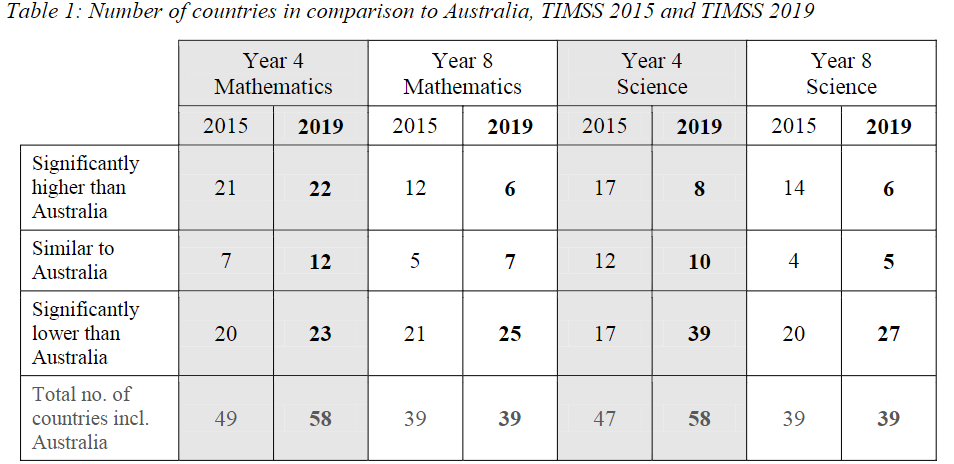
Australia has climbed into top 10 in Year 8 maths and science, and Year 4 science, the latest Trends in International Mathematics and Science Study (TIMSS) report shows.
TIMSS – the world’s longest running large-scale international assessment of mathematics and science – explores how well Year 4 and Year 8 students have mastered the factual and procedural knowledge taught in school mathematics and science classes.
More than 580 000 students from 64 countries and 8 benchmarking systems participated in the 2019 study, including 14 950 Australian students from 571 Australian schools.
According to the latest data, between 68-78% of Australian students achieved the TIMSS Intermediate international benchmark–the nationally agreed proficient standard–compared to more than 90% of students in the highest achieving country, Singapore.
However, the proportion of Australian students achieving this standard improved since 2015 in Year 8 science only. The report also identified a slump in Year 4 mathematics.

TIMSS National Research Coordinator and ACER Deputy CEO Dr Sue Thomson said the report includes “a good news story” in terms of improvement in mathematics and science in Years 4 and 8, as well as some progress towards Australia’s national education goals.
However, Dr Thomson noted that the results are not uniform.
“There is a clear relationship between disadvantage and underachievement,” she told The Educator.
“These results are a call to arms to everyone involved in education to find ways of redressing the imbalance in opportunities and resources available to these students, to help lift achievement for all Australian students”.
Dr Thomson said she was surprised by the widening gap between boys and girls in Year 4 mathematics.
“This is the opposite of the findings for the other subjects, which have either closed gaps [Year 8 mathematics and science] or never had a gap [Year 4 science],” she said.
“This is a concern for gender parity and, if it continues, may reverse the positive trend found in the other subjects and also have broader implications for women’s participation in STEM”.


